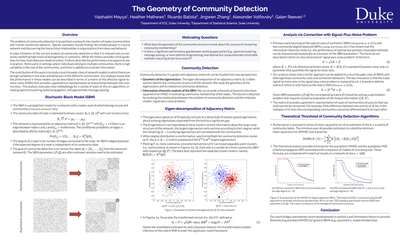
Abstract
The problem of community detection is to partition a network into clusters of nodes (communities) with similar connection patterns. Specific examples include finding like-minded people in a social network and discovering the hierarchical relationships in organizations from observed behavior. A major limitation of the current analysis of community detection is that it is relevant only to networks exhibiting high levels of homogeneity or symmetry. While the theory provides initial guidelines for how much data one needs to collect, it fails to describe the performance one expects to see in practice. Particularly in settings where individuals belong to multiple communities, there is high variability in the size of the communities, and there is additional covariate information. The contribution of this work is to study a much broader class of network models in which there can be high variability in the sizes and behaviors of the different communities. Our analysis shows that the performance in these models can be described in terms of a matrix of the effective signal-tonoise ratios (SNRs) that provides a geometrical representation of relationships between the communities. This analysis motivates new methodology for a variety of state-of-the-art algorithms, including spectral clustering, belief propagation, and approximate message passing.
